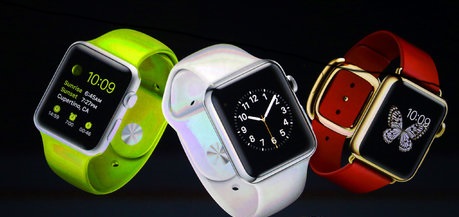Apple announced at its event in Cupertino, CA on September 10th that two new iPhone models, the iPhone 6 and iPhone Plus will be available from September 2014 along with its new smartwatch, which will be available in 2015. The big news was their wrist watch (and maybe Apple Pay, but that’s for another time). It caused some concern that the MagSafe wireless charging would complicate the Wireless Power Consortium by adding a fourth solution. A report from IHS indicates otherwise, that it won’t be a problem.

IHS analysis
The wireless charging market currently contains three separate standards driven by the Wireless Power Consortium, the Power Matters Alliance and the Alliance for Wireless Power. Concerns that the industry could be become further complicated by Apple entering with a fourth disruptive proprietary solution were allayed during its event on 9th September 2014, at least for another six to twelve months ahead of its future product announcements.
While Apple did announce a wireless charging solution for its eagerly awaited smartwatch, in contrast to the smartwatch itself the solution appears far from innovative compared with other wireless charging technologies currently in production or development and no mention of support for wireless charging for iPhone or other Apple devices was made.
Apple’s “wireless charging” is not really wireless
Existing wireless charging solutions are typically a pad, mat or “plate” that consumers can place an enabled device on to charge without connecting the two physically. The enabled device (for example, a cell phone) can be picked up for use and replaced to charge, thus often termed “drop and charge”. Advancements in technology are seeing the emergence of solutions that are offering greater spatial freedom, wireless charging through surfaces (for example, through the surface of a desk), support for wireless charging of multiple devices from the same wireless charger and even wireless charging over distance.
Apple’s solution for its smartwatch, while it uses inductive charging, is not a “drop and charge” solution, nor does it offer any range of freedom of movement to the user. The smartwatch is in essence physically tethered to the charger at all times while charging and held in place by a magnet. Essentially a wire with a magnet on the end.
Apple’s announcement may drive some awareness of inductive or wireless charging, it’s not really promoting the use case or benefits that this technology has to offer. The positives from its announcement are really that the wireless charging market has room to develop further without added disruption from Apple in the short-term at least.
Key Points
• Adoption of ‘drop and charge’ wireless charging predicted to remain unaffected by Apple’s wireless charging solution for its smartwatch.
• Concerns over an Apple proprietary wireless charging solution adding further confusion to conflicting standards allayed.
• Next generations of Apple iPhone (iPhone 6 and iPhone 6 Plus) will ship without support for wireless charging. Third party accessories will be required to enable them.
For more information: technology.ihs.com
Advertisement





